When it comes to food, people have been getting creative since the dawn of time.
Whether bringing back nostalgic 1950s recipes or replanting 800-year-old squash seeds to incredible results, as long as we have a strong appetite and a vivid imagination, anything is possible!
And when I spotted this ancient method for refrigerating produce, I almost wanted to throw away my fridge.
Root cellars are one of the first ways that humans were able to store food, long before electricity was even a flicker in Thomas Edison's mind.
Dating back to the dawn of civilization, these below-ground mini caves were the perfect way to keep food fresh after the fall's harvest and long into spring's thaw.
But even better, folks today are still building their very own root cellars as DIY alternatives to the ordinary indoor fridge — and it's surprisingly easy.
Scroll through below for some incredible DIY root cellar ideas, and to see just why you might consider moving your produce to the backyard!
Would you want your very own backyard root cellar? Let us know in the comments.
[H/T: Off the Grid News, Rodale's Organic Life, American Garden History]
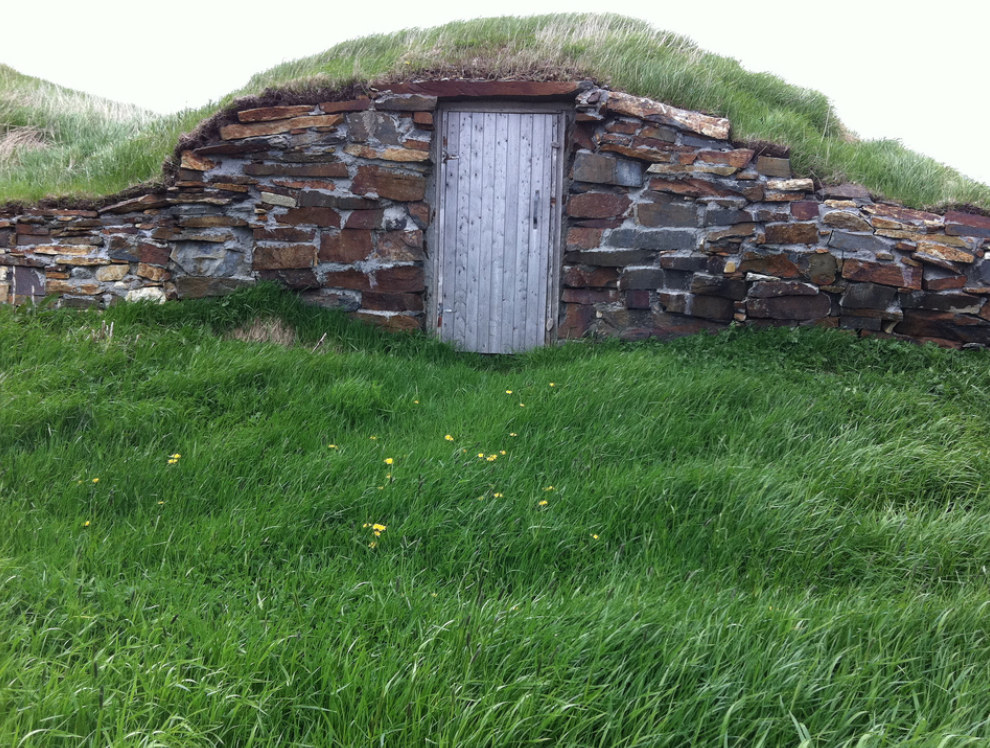
Root cellars have been around since the beginning of man. In fact, the oldest known cellar dates back 40,000 years ago.
Even when humans were still roaming the Earth as hunter-gatherers, it was still incredibly important to preserve food to last through the long winter months.

In 1800s Colonial America, the root cellar was the gold standard for refrigeration.
Though traditionally built to store root vegetables — like potatoes, beets, and turnips — the cellars were also the perfect places to dry beef and store homemade fruit preserves.
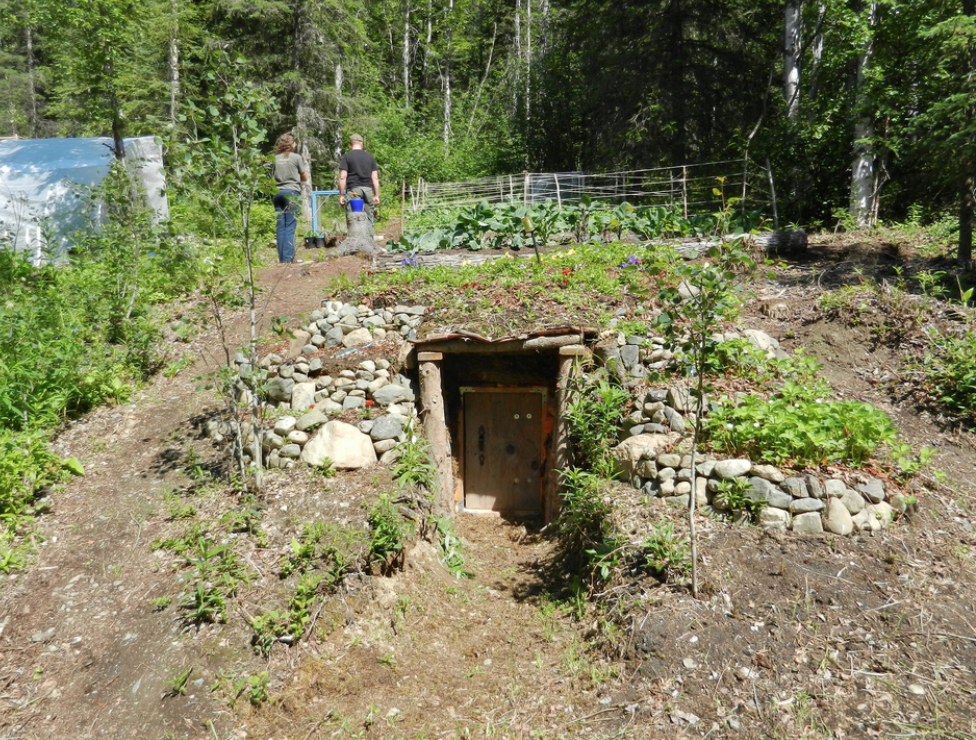
The design elements are simple. A root cellar requires cool temperatures, moisture, and air circulation. They are traditionally built with stone, wood or mortar.
The temperature should usually stay below 45 °F, and the lower you build the cellar into the earth, the cooler the temperature.
To retain moisture, the cellar is often constructed with an open-earth floor or by adding sawdust.
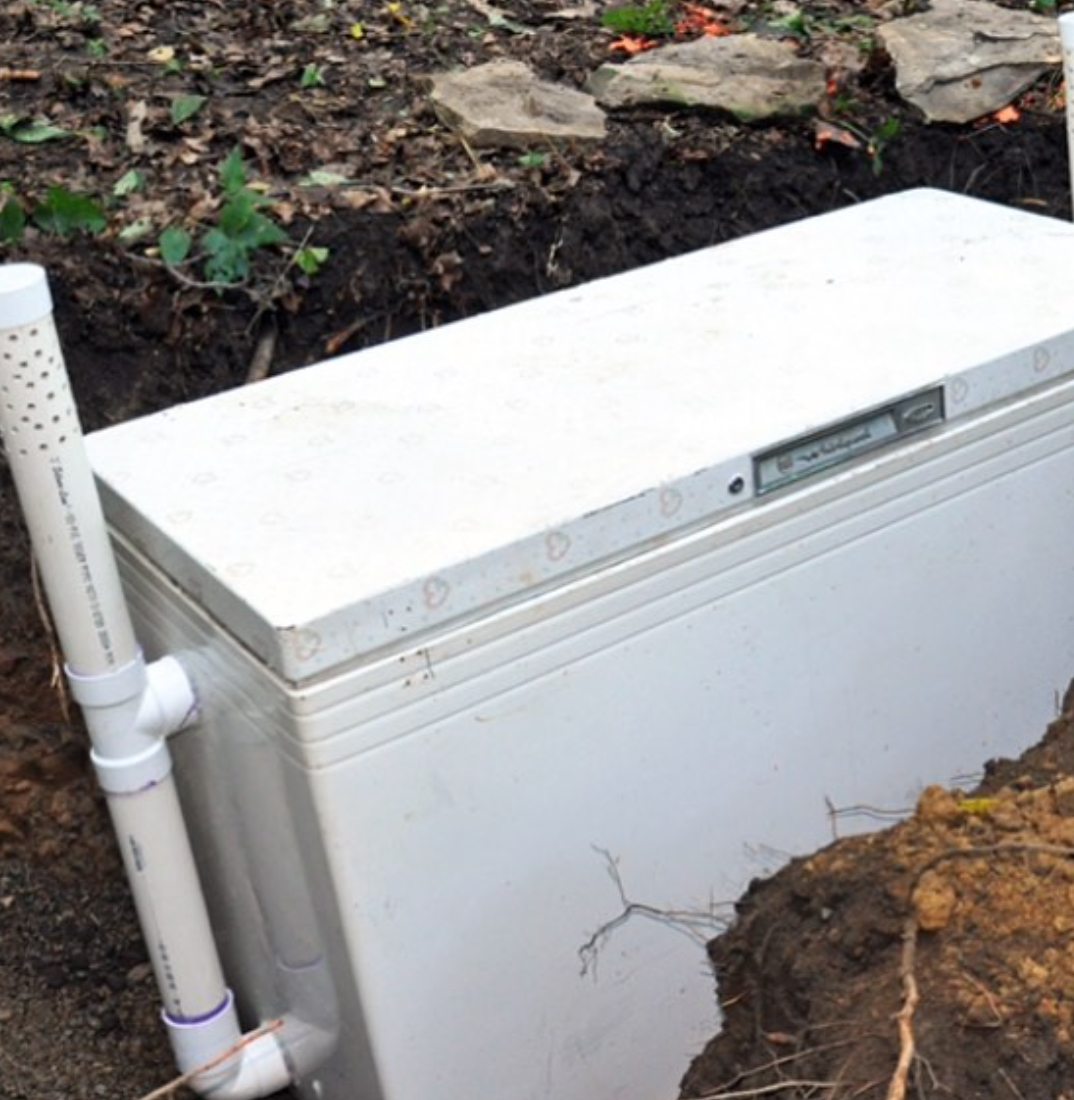
An old freezer buried in the ground makes an easy and simple DIY root cellar.
Mother Earth News suggests, however, placing a digital thermometer in the fridge to keep tabs on the temperature. If it's especially cold outside, you'll want to monitor your cellar and, if need be, bring your produce inside for the night.
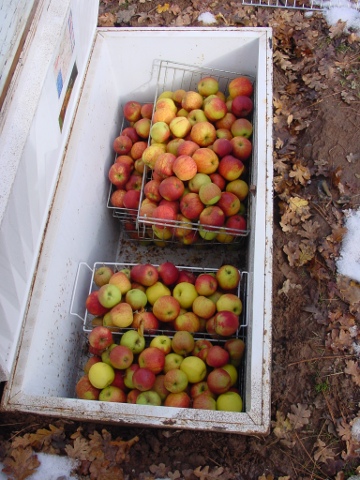
This freezer-cooler combo makes the perfect cooling spot for some fall produce.
To begin, dig an appropriate-size hole for your root cellar. One DIY-er at Winward painted a layer of tar for extra protection against the elements.
Afterward, he added an insulated lid with plywood and foam to ensure his produce could chill in an absolutely airtight container.
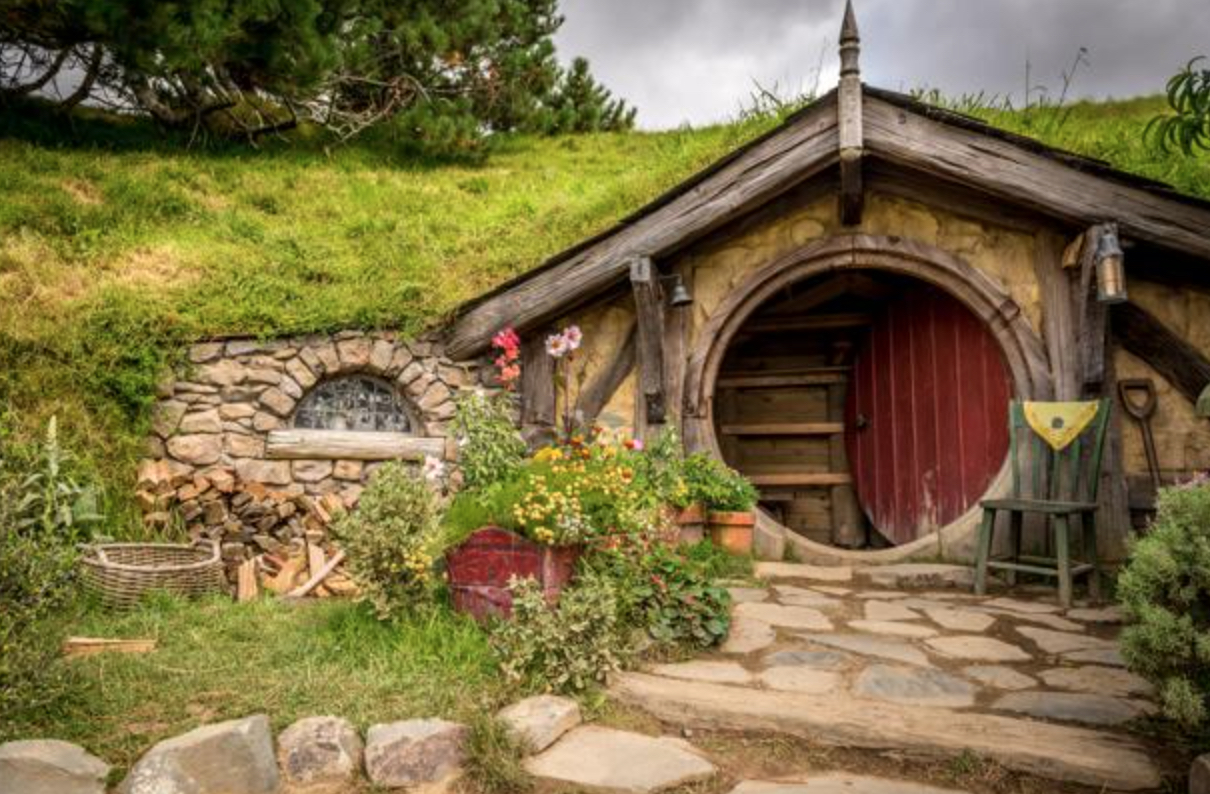
If you're looking for something a bit more elaborate, you can build an entire room dedicated to keeping those veggies fresh.
It's also very important to create a space with proper ventilation, or else your food runs the risk of spoiling.
By adding pipes that allow for air to move freely, you ensure that your produce will remain at the correct temperature and moisture level.
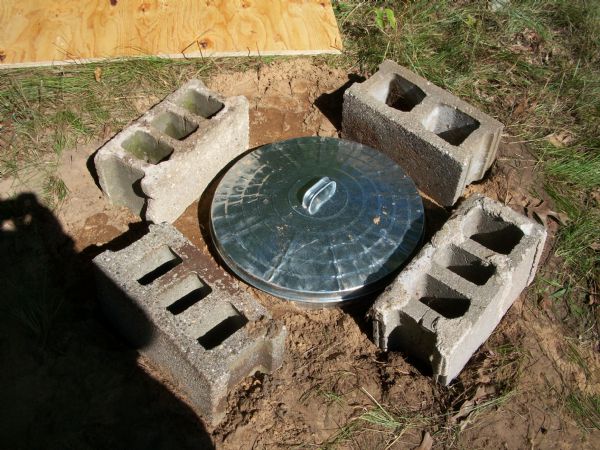
If you're looking for a cheaper alternative, a metal garbage can works handily as a spot to keep your food chilled.
First, buy or upcycle a stainless-steel garbage can. Dig your hole, making sure to leave the top of the can visible above the ground's surface.
Add a layer of straw to the bottom of your cellar (to keep everything moist), and then place your vegetables in the can.
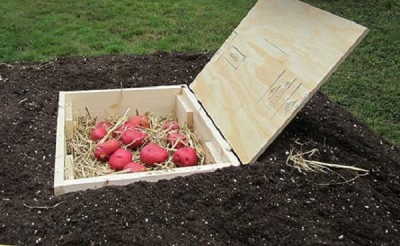
You can also use a wooden box to create a rustic-looking root cellar.
Simply find or build a small wooden box, lining it with hardware cloth to prevent rodents from destroying your produce.
Add moss and straw, then add your vegetables and sprinkle some straw on top of the closed lid.
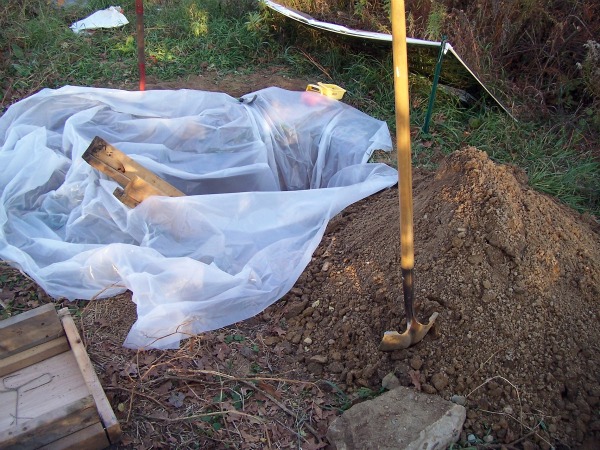
If all else fails, just dig a hole! It's that easy.
Start by choosing a shady spot, far away from tree roots. Dig a four-foot-deep hole, and line the bottom with hardware cloth and a layer of straw.
Place your produce in, cover up the hole, and rest assured that your veggies are safe and dry.
For extra protection, feel free to add a tarp over the hole.
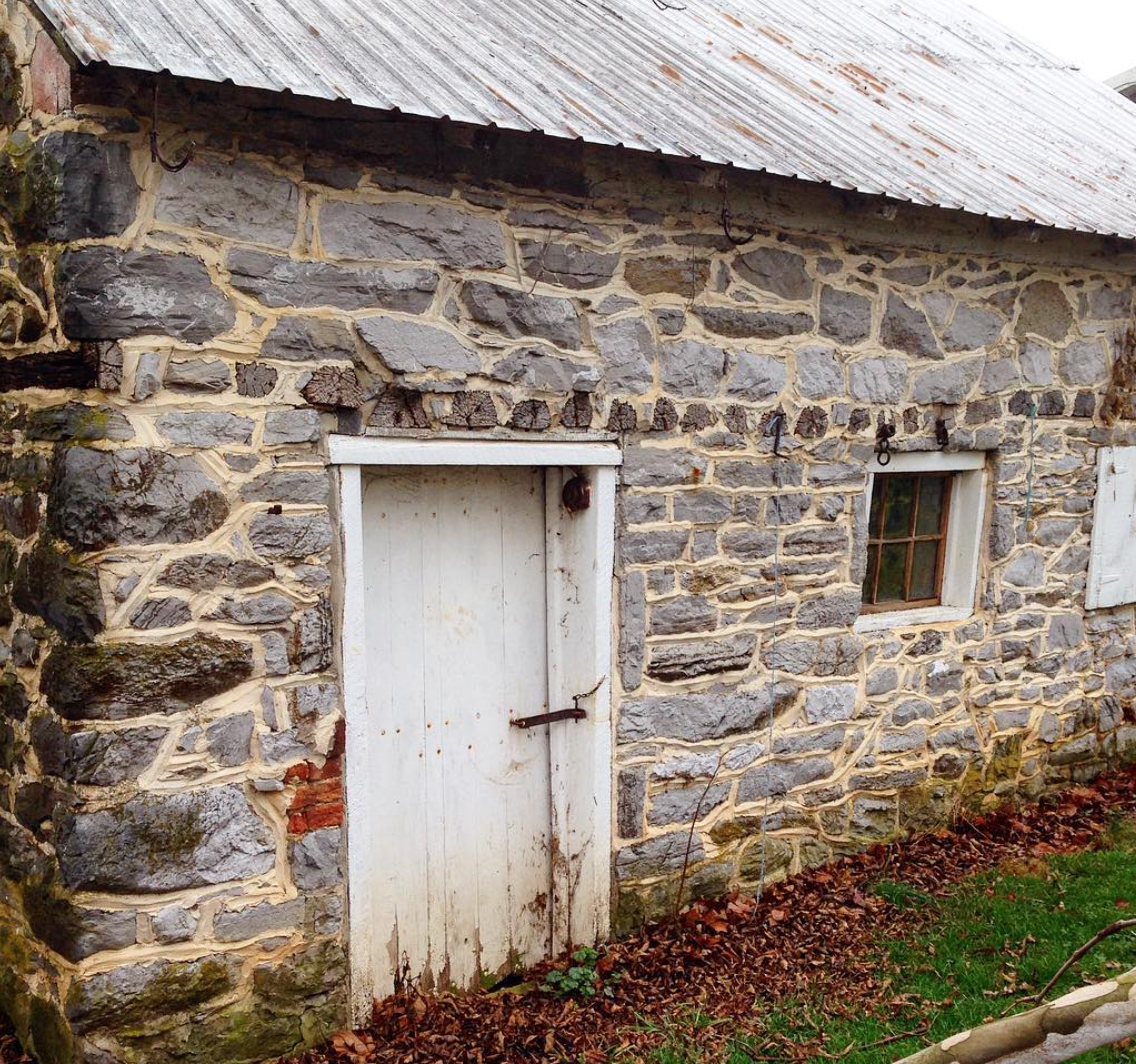
Another lovely alternative to your traditional root cellar is a "spring-house."
Like the name implies, this is a structure that stores food, built at the mouth of a spring. The moisture and chill from the water keeps the room both cool and humid.
Root cellars are an amazing way to "get back to nature" and explore produce preservation outside the kitchen.
How do you preserve your fruits and vegetables? Let us know in the comments.
Please SHARE if you love farm-to-table eating!




